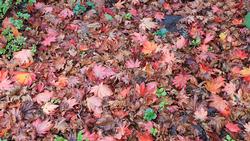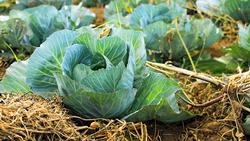Keep Your Soil Healthy
Once you’ve got healthy soil, keeping it that way is mostly about maintaining a desirable environment for the many creatures that live there. Here are some of the ways to keep your soil healthy.
Add organic material

Why
• Provides a slow and steady supply of plant nutrients.
• Improves soil structure - promotes movement of air and water, and a better home for plant roots and soil organisms .
How
• Allow leaves and other plant materials to decompose in the garden.
• Leave grass clippings on the lawn.
• Use compost as a mulch.
• Keep plants growing throughout the year - plant roots contribute carbon to soil.
Maximize soil cover

Why
• Moderates soil temperature and conserves moisture.
• Provides food and habitat for fungi, bacteria, and arthropods, and prevents the destruction of microbial habitat by erosion.
How
• Keep soil covered by plants, their residue or organic mulch.
• Keep plants growing as long as possible to provide food for the soil microbes during the entire growing season.
• Leave plant residue in place.
Minimize disturbance
Why
• Soil disturbance from tilling, leveling, or changing its natural physical arrangement is destructive and disruptive to plant roots and soil microbes
• Creates a hostile environment for underground organisms.
• It can destroy soil structure, and make it more susceptible to erosion, carbon loss, and ponding.
How
• Avoid tilling or turning soil.
• Add organic materials the way nature does: the "no-till" way of continually adding new layers of dead and decomposing plant matter that feeds the soil and improves its structure.
•To avoid soil compaction, do not walk over bare soil.
• Tilling may be necessary if you’ve got sticky clay or need to correct deficiencies in organic matter or nutrients. A one-time mixing in of organic matter can aid in creating more workable soil.
•Learn about sheet composting, also known as lasagna composting or sheet mulching.
Encourage biodiversity
Why
• A wide mixture of plants supports the diversity of soil microorganisms in the soil.
• Landscapes that enhance biodiversity are more resilient to pests, diseases, and even the effects of climate change.
How
• Grow native plants, which are the cornerstone of the incredible biodiversity in Marin and throughout California.
• Include different plant types (perennial, annual, woody, grassy, broadleaf, legume, etc.) and plants with different root structures (tap, fibrous, etc.).
• Create habitat for pollinators and other beneficial wildlife
Minimize the use of chemicals
Why
• Fertilizers and pesticides may be toxic to microorganisms in the soil. Some pesticides break down quickly while others may persist for long periods.
How
• Add organic compost rather than synthetic fertilizer.
• Choose disease-resistant plant varieties and plants that will grow well in your site.
• Manage pests by providing habitat for natural enemies.
• Use an integrated pest management approach to help reduce the use of pesticides.
